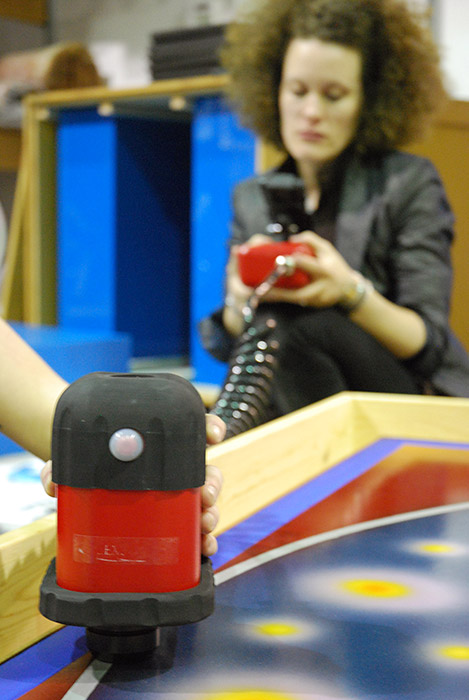Technical Studies
Two technical studies are currently underway: 1) technologies used by an innovative group of sculptors from the 1960s and 1970s and 2) working methods of painter Frederick Hammersley.
Artists from the 1960s and 1970s
Often labeled a "Finish Fetish" or "L.A. Look" artists, Los Angeles-based artists in the 1960s and 1970s were producing works influenced by their surrounding landscape, both natural and human made, using a wide range of innovative materials and fabrication processes often borrowed from industry. These artists created seamless, bright, and colorful objects that blurred the boundaries between painting and sculpture and between handcrafted and industrially produced objects. This study is focused on the novel and often experimental technologies applied by these artists in combination with analytical data relating to the materials of construction.
Materials and technologies employed by De Wain Valentine were among the first to be examined because of Valentine's pioneering use of polyester resin.
For many of his sculptures in the '60s and '70s, Valentine worked with polyester resin, which could be pigmented and cast into any shape, then sanded and polished to create stunning objects with a very smooth finish. However, none of the commercially available polyester resins could be cast in large volumes. Unwilling to accept this limitation, and with much trial and error, Valentine was able to develop a new polyester resin with a local resin company that would allow him to create, with a single pour of resin, luminous artworks of much larger proportions.
In 2012, the GCI organized the exhibition, From Start to Finish, De Wain Valentine's Gray Column, which presented to the public the research from this study.
The works of Peter Alexander, Larry Bell, Robert Irwin, Craig Kauffman, John McCracken and Helen Pashgian were also studied. The studies on Alexander and Pashgian are disseminated through the Artists Dialogues series and the research on Bell, Irwin, Kauffman and McCracken will be compiled in a book (expected publication Fall 2014).
Frederick Hammersley
Frederick Hammersley (1919-2009) was one of the leading abstract painters in Southern California in the postwar period. Alongside Karl Benjamin, Lorser Feitelson and John McLaughlin, he first came to prominence as part of the group exhibited as Four Abstract Classicists (1959) who were painting in a style that came to be known as "West Coast Hard-Edge."
Throughout his life, Hammersley kept meticulous records of his painting practice and process, including a set of four volumes he called his Painting Books. These record sequentially the physical details of his completed geometric paintings from 1959 onward. Hammersley continued painting well into his late eighties, and the last entries in Painting Book 4 were made a few months before his death.
He was a consummate craftsman, clearly very concerned about the longevity of his artistic creations. His Painting Books offer wonderful insights into the relationships between his materials, technique and creative intent; they are an important reference source for conservators who encounter his work.
The value of such a comprehensive record of production processes, material considerations, and artist's intent has few parallels. In October 2013, the Fredrick Hammersley Foundation donated the artist's archive to the Getty Research Institute. A detailed examination of the notebooks and other archival material held by the Hammersley Foundation is being undertaken. The notebooks are being transcribed with a view to entering the contents into a text-searchable database that will serve as research tool for detailed analysis of the painter's practice.
Page updated: November 2013


